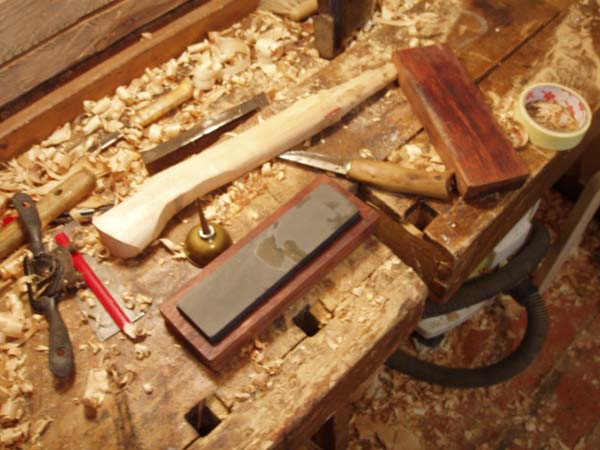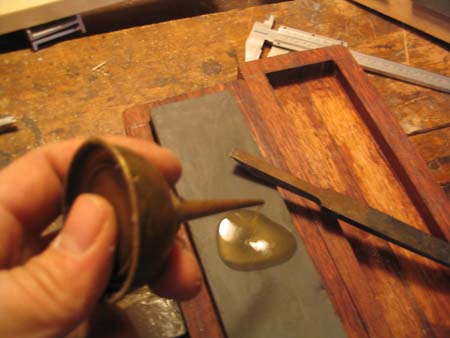Pekka Huhta
Established Member
The previous owner of our house was a carpenter and fortunately there were quite a bit of his "useless" old tools left in the house when we bought it. A very inexpensive way for obtaining tools, just buy a good set and they throw in a house on the side...

His sharpening stones are something that I've not seen or tried before.
I'm not sure if this is an arkansas or other type, but it sure is hard. In any case it has a bit of a saddle on it after everything I've done to put it straight. I have used a good lot of other stones during the years, but this is the most promising one I've seen. A bit coarse perhaps, but still enough for most of my tools, and the rest need only a touch after this.
To get to the point, how will I get the stone straight? I've tried all available things, but after a few days I still have too much hollow on the stone.
40 grit watersanding on glass was a good try, but the two-pound jug of elbow grease wore out before the stone had more than matchbox sized specks of smooth area on the ends.
40 grit belt sander got me closer to two cigarette-box-sized smooth areas, and I got closer to level surface, but it's difficult to keep the ends parallel. And I burned several belts on this attempt. Of course I had to go through the sanding on glass to get it straight, but I got it about there. Not even close to perfect, but the stone is so good that I use it anyway. And I haven't touched the other side.
Any good suggestions on this one? Diamonds are anybody's best friends, but I really can't afford them. A good glass or steel surface with emery dust (or whatisit these days) would be good for other things as well, including a irrational urge for flat soles
Do you have any good web pages, tricks or should I just stop sorrying my bad tennis elbow (hammer elbow in fact) and just get back to work?
Pekka

His sharpening stones are something that I've not seen or tried before.
I'm not sure if this is an arkansas or other type, but it sure is hard. In any case it has a bit of a saddle on it after everything I've done to put it straight. I have used a good lot of other stones during the years, but this is the most promising one I've seen. A bit coarse perhaps, but still enough for most of my tools, and the rest need only a touch after this.
To get to the point, how will I get the stone straight? I've tried all available things, but after a few days I still have too much hollow on the stone.
40 grit watersanding on glass was a good try, but the two-pound jug of elbow grease wore out before the stone had more than matchbox sized specks of smooth area on the ends.
40 grit belt sander got me closer to two cigarette-box-sized smooth areas, and I got closer to level surface, but it's difficult to keep the ends parallel. And I burned several belts on this attempt. Of course I had to go through the sanding on glass to get it straight, but I got it about there. Not even close to perfect, but the stone is so good that I use it anyway. And I haven't touched the other side.
Any good suggestions on this one? Diamonds are anybody's best friends, but I really can't afford them. A good glass or steel surface with emery dust (or whatisit these days) would be good for other things as well, including a irrational urge for flat soles
Do you have any good web pages, tricks or should I just stop sorrying my bad tennis elbow (hammer elbow in fact) and just get back to work?
Pekka






